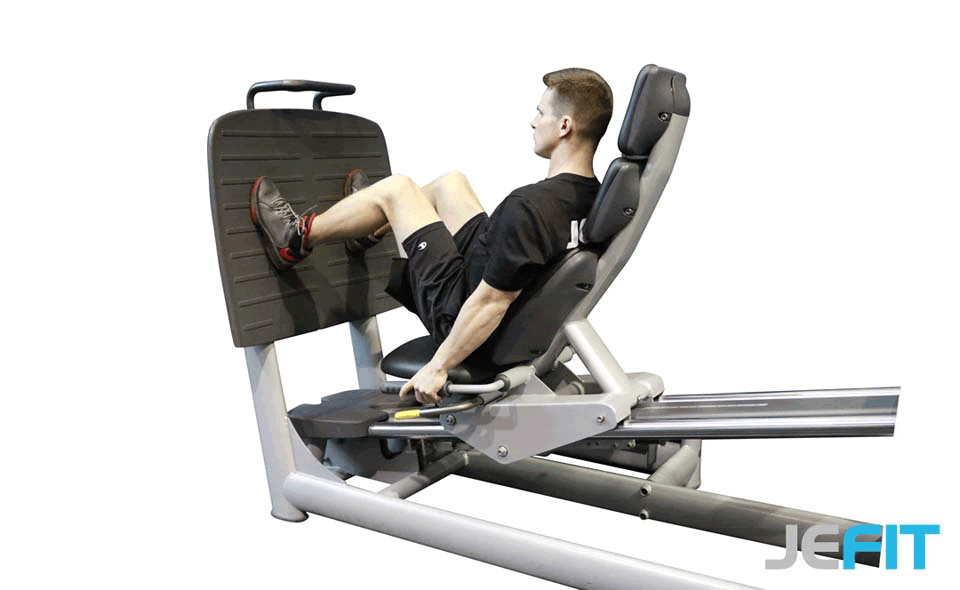Health & Wellness
Migraine Types: Differentiating Between Migraine Variants
Migraines are complex and debilitating headaches that affect millions of people worldwide. While most of us commonly associate migraines with intense head pain, they actually come in various forms, each with its own unique set of symptoms and characteristics.
Published
9 months agoon
By
Andrea

Migraines are complex and debilitating headaches that affect millions of people worldwide. While most of us commonly associate migraines with intense head pain, they actually come in various forms, each with its own unique set of symptoms and characteristics. In this comprehensive guide, we’ll embark on a journey to understand the wide spectrum of migraine types and discover how to distinguish between these variants. From the classic migraine to rare and lesser-known types, we’ll delve into the intricacies of these headaches and provide insights into recognizing and managing them effectively.
8 Different Types Of Migraine
1. Migraine without Aura (Common Migraine)
Common migraines typically manifest as moderate to severe headache pain, often localized to one side of the head. This unilateral throbbing or pulsating pain is the hallmark symptom of this migraine subtype. The headache’s intensity can be debilitating, making it challenging for individuals to carry on with their daily activities. The pain’s unilateral nature distinguishes it from tension-type headaches, which often affect both sides of the head. Moreover, these headaches can last for hours to days, significantly impacting the individual’s quality of life.
Key Symptoms of Common Migraine:
Common migraines are accompanied by a cluster of symptoms that contribute to their distinctive profile. These symptoms include nausea, which can range from mild discomfort to severe queasiness, and an increased sensitivity to sensory stimuli, particularly light (photophobia) and sound (phonophobia). These sensitivities exacerbate the distress experienced during an attack. Sufferers may seek refuge in dark, quiet spaces to alleviate their discomfort.
Distinguishing Feature of Common Migraine:
One of the defining characteristics that set common migraines apart from other migraine subtypes is the absence of visual or sensory disturbances known as “auras.” Auras are neurological symptoms that precede or accompany some migraines. They can manifest as visual disturbances, such as flashing lights, zigzag lines, blind spots, or even temporary vision loss. In contrast, common migraines lack these visual or sensory warning signals, making them distinct in their presentation.
2. Migraine with Aura (Classic Migraine)
Classic migraines, often referred to as migraines with aura, represent a distinct and fascinating subtype of migraine headaches. These migraines are distinguished by their characteristic prelude known as an “aura.” The aura is a unique phase that precedes the onset of the headache itself. It’s like a storm warning before the tempest, providing both intrigue and apprehension to those who experience it.
Key Symptoms of Classic Migraine:
During the aura phase, individuals may undergo a spectrum of sensory disturbances, each with its own intriguing attributes. The aura typically unfolds gradually over a period of about 20 minutes, alerting the person that a migraine is imminent. These sensory disruptions can manifest in various ways:
- Visual Disturbances: One of the most common and striking features of classic migraines is visual disturbances. These can encompass a wide range of phenomena, including the perception of flashing or flickering lights, shimmering zigzag lines, or even temporary blind spots. These visual aberrations are often described as surreal and can be profoundly disorienting.
- Tingling or Numbness: Beyond the visual realm, auras can extend to affect the body’s sensations. Some individuals experience tingling or numbness, often described as a pins-and-needles sensation. This can occur in various regions of the body, such as the face, hands, or limbs. It’s as if the nervous system briefly misfires, creating peculiar sensations.
- Speech Difficulties: Another distinctive characteristic of aura is its potential to disrupt speech. Some people with classic migraines may find themselves struggling to articulate words, forming sentences that sound garbled or incoherent. This phenomenon, known as aphasia, can be both bewildering and concerning.
Distinguishing Feature of Classic Migraine:
The hallmark feature that sets classic migraines apart from other migraine types is, without a doubt, the presence of these auras. While auras can vary in nature and intensity from person to person, they are a defining attribute of classic migraines. They serve as a sort of neurological overture, a warning signal that the impending headache is about to take center stage.
It’s important to note that not all migraine sufferers experience auras, and the absence of auras does not diminish the severity or validity of a migraine headache. Classic migraines, with their prelude of sensory phenomena, add a layer of complexity and intrigue to the already enigmatic world of migraines. Understanding these distinctive features is crucial for accurate diagnosis and tailored treatment strategies, allowing individuals to better manage and cope with this often debilitating condition.
3. Chronic Migraine


Key Symptoms of Chronic Migraine:
The primary symptom of chronic migraines is the presence of headaches that occur on most days. These headaches often exhibit varying levels of severity, ranging from mild to severe, which can fluctuate over time. This variation in headache intensity is a notable characteristic of chronic migraines.
It’s important to note that chronic migraines can evolve from episodic migraines, where individuals who initially experience occasional migraine attacks (less than 15 days per month) may transition into the chronic migraine category if the frequency of their attacks increases.
Distinguishing Feature of Chronic Migraine:
The defining feature that sets chronic migraines apart from other types of headaches, including other migraine variants, is their chronic and persistent nature. The fact that these headaches occur on 15 or more days per month for a continuous period of at least three months distinguishes them. This high frequency of headache days often leads to a significant reduction in the individual’s quality of life and can interfere with daily activities, work, and social engagements.
Chronic migraines require specific management strategies and often involve a comprehensive approach to treatment, including lifestyle modifications, preventive medications, and acute pain relief measures. The chronicity of these migraines necessitates a long-term and proactive approach to control and alleviate symptoms, making accurate diagnosis and tailored treatment plans essential for individuals dealing with this challenging condition.
4. Menstrual Migraine
Menstrual migraines, as the name suggests, are a specific type of migraine headache closely tied to the hormonal fluctuations that occur during the menstrual cycle. This variant of migraine is a prime example of how the intricate interplay between hormones and the nervous system can lead to distinct patterns of headache occurrence. Menstrual migraines typically manifest before, during, or after menstruation, making them a recurring challenge for many individuals.
Key Symptoms of Menstrual Migraines:
The hallmark of menstrual migraines is the presence of severe headaches, often characterized by a throbbing or pulsating quality. These headaches can be excruciating and debilitating, causing intense pain that can last for hours or even days. In addition to the severe head pain, menstrual migraines are often accompanied by a cluster of typical migraine symptoms, including:
- Nausea: Many individuals with menstrual migraines experience waves of nausea, which can lead to vomiting in some cases.
- Sensitivity to Light (Photophobia): Bright lights, sunlight, or even flickering screens can intensify the discomfort during an episode.
- Sensitivity to Sound (Phonophobia): Common sounds, like conversations or even background noise, can become painfully loud and aggravating during an attack.
- Aura (in Some Cases): Although not a universal feature, some individuals may experience sensory disturbances known as auras before or during menstrual migraines. These can include visual disturbances like flashing lights or zigzag lines, as well as sensory symptoms such as tingling in the face or limbs.
Distinguishing Feature of Menstrual Migraines:
What sets menstrual migraines apart from other migraine types is their distinct temporal relationship with the menstrual cycle. While migraine patterns can vary widely among individuals, menstrual migraines are characterized by their predictability in relation to menstruation. Here’s how this distinguishing feature plays out:
- Timing: Menstrual migraines typically occur in a specific window around the menstrual cycle, which includes the days just before, during, or immediately after menstruation. This temporal association is a key diagnostic criterion.
- Hormonal Influence: Hormonal changes, particularly the drop in estrogen levels that occurs just before menstruation, are believed to be a significant trigger for these migraines. This hormonal influence distinguishes them from migraines unrelated to the menstrual cycle.
- Pattern Recognition: Keeping a migraine diary to track headache patterns in relation to the menstrual cycle can be immensely helpful in confirming a diagnosis of menstrual migraines. This record allows individuals and healthcare providers to identify a recurring pattern of headache occurrence.
5. Hemiplegic Migraine:
Hemiplegic migraines are an exceptionally rare and exceptionally severe form of migraine headache. What sets them apart from other types of migraines is their ability to mimic a stroke. This unique characteristic makes them particularly challenging to diagnose and manage. The hallmark feature of hemiplegic migraines is the occurrence of temporary paralysis or weakness, but their complexity extends beyond this primary symptom.
Key Symptoms of Hemiplegic Migraine:
- Motor Weakness: Motor weakness is a defining symptom of hemiplegic migraines. Individuals experiencing an attack often find that they have difficulty moving or controlling one side of their body. This can range from a mild loss of coordination to almost complete paralysis on one side. The weakness is typically temporary and reversible, but it can be frightening and disorienting during an attack.
- Visual Disturbances: Visual disturbances are another prominent feature of hemiplegic migraines. These disturbances can take various forms, including:
- Aura: Some individuals with hemiplegic migraines experience visual auras, similar to those in classic migraines. These auras can involve shimmering lights, blind spots, or other visual anomalies that can be highly disconcerting.
- Visual Hallucinations: In some cases, individuals may perceive objects or scenes that aren’t actually present. These hallucinations can further contribute to the confusion and distress associated with hemiplegic migraines.
- Speech Difficulties: Hemiplegic migraines can also affect an individual’s ability to speak coherently. Speech difficulties during an attack may include slurred speech, difficulty finding the right words, or even complete aphasia, where the person is unable to speak at all. These speech-related symptoms can be particularly distressing and can sometimes be mistaken for signs of a stroke.
Distinguishing Feature of Hemiplegic Migraine:
The most distinguishing and defining feature of hemiplegic migraines is the occurrence of temporary paralysis or weakness, often limited to one side of the body. This neurological symptom, which can mimic a stroke, is not typically seen in other migraine variants. It is this unique characteristic that sets hemiplegic migraines apart from the broader spectrum of migraine disorders.
6. Vestibular Migraine


Understanding the Vestibular System
Before delving into the intricacies of vestibular migraines, it’s essential to comprehend the role of the vestibular system. This intricate system contributes to our ability to maintain balance, stabilize our gaze during head movement, and navigate our surroundings effectively. It involves structures such as the inner ear, vestibular nerve, and specific brain regions that process sensory information related to motion and spatial orientation.
Key Symptoms of Vestibular Migraines
Vestibular migraines are characterized by their profound impact on the vestibular system. Individuals who experience these migraines often report a range of distressing symptoms:
- Dizziness: Dizziness in vestibular migraines is more than a fleeting feeling of lightheadedness. It often manifests as a persistent sensation of unsteadiness or a vague feeling of being “off-balance.” This symptom can be so debilitating that it interferes with daily activities and may even lead to falls.
- Vertigo: Vertigo is a hallmark symptom of vestibular migraines. It’s characterized by an intense spinning sensation, as if the world around you is whirling or tilting. Vertigo attacks can be sudden and severe, causing significant disorientation and discomfort.
- Balance Issues: Problems with balance are another prevalent symptom. Individuals with vestibular migraines may struggle to walk steadily, especially during or after an attack. This instability can be accompanied by a heightened risk of falling.
- Nausea and Vomiting: Like other migraine types, vestibular migraines can bring about nausea and vomiting. These symptoms can compound the distress caused by the vestibular symptoms themselves.
Distinguishing Vestibular Migraines
What truly sets vestibular migraines apart is the prominence of these vestibular symptoms. While other migraine types may include elements of dizziness or nausea, vestibular migraines are distinguished by the intensity and duration of vestibular disturbances. The vertigo experienced in vestibular migraines, for instance, is often severe and can persist for extended periods, severely impacting daily life.
Managing Vestibular Migraines
Managing vestibular migraines can be challenging due to their unique symptomatology. Treatment typically involves a combination of strategies:
- Medications: Preventive medications, such as certain blood pressure drugs and antiepileptic medications, may be prescribed to reduce the frequency and severity of vestibular migraine attacks. Acute migraine medications can help alleviate symptoms during an attack.
- Lifestyle Modifications: Lifestyle changes, including dietary adjustments, stress management techniques, and regular sleep patterns, can contribute to migraine prevention.
- Vestibular Rehabilitation: Vestibular rehabilitation therapy, conducted by physical therapists, focuses on improving balance and reducing dizziness through specific exercises and maneuvers.
7. Retinal Migraine
Retinal migraines are a relatively rare and distinctive subset of migraine headaches that are notable for their capacity to induce temporary but severe vision disturbances or, in some cases, complete vision loss in one eye. This particular type of migraine, while infrequent, can be profoundly distressing due to its sudden and alarming impact on vision.
Key Symptoms of Retinal Migraine:
The hallmark symptom of a retinal migraine is the abrupt onset of temporary vision loss or blindness, typically occurring in one eye. This visual impairment often appears suddenly, creating considerable concern and anxiety for those affected. The duration of these episodes can vary, but they are usually relatively brief, lasting from several minutes to less than an hour.
During an episode, individuals may experience:
- Scotoma: A localized area of vision loss, often described as a blind spot or a shimmering, jagged line in the visual field.
- Blindness: In some cases, the loss of vision can be more extensive, leading to complete blindness in one eye for the duration of the episode.
- Headache: While the visual disturbance is the primary feature, individuals with retinal migraines may also experience a headache, which can precede, accompany, or follow the visual symptoms.
Distinguishing Feature of Retinal Migraine:
The defining characteristic that sets retinal migraines apart from other migraine types is the temporary but pronounced vision loss or blindness that affects one eye during an episode. This distinctive symptom pattern can be differentiating for healthcare professionals when making a diagnosis.
Potential Causes and Triggers of Retinal Migraine:
The exact cause of retinal migraines remains the subject of ongoing research, but they are believed to be related to the constriction and dilation of blood vessels in the eye. Some common triggers for retinal migraines may include stress, certain foods, hormonal fluctuations, or environmental factors. It’s important to note that these triggers can vary among individuals.
Management and Seeking Medical Attention:
Given the visual disturbances associated with retinal migraines, individuals who experience such episodes are strongly advised to seek immediate medical attention. While these episodes are typically reversible, they could be indicative of underlying vascular issues that require evaluation and management. A healthcare provider can perform a thorough assessment, including a comprehensive eye examination and, if necessary, additional diagnostic tests to rule out more serious conditions.
8. Chronic Migraine with Medication Overuse
Chronic Migraine with Medication Overuse is a complex and challenging form of migraine that is characterized by the frequent occurrence of headaches, often on a daily basis, due to the overuse of pain-relief medications. It’s a condition where the very treatments intended to alleviate pain paradoxically contribute to the perpetuation of headaches.
Key Symptoms of Chronic Migraine:
The primary symptom of this migraine type is the presence of frequent headaches, which can occur daily or almost daily. These headaches are often severe and disabling, significantly impacting the individual’s quality of life. They typically resemble tension-type headaches or migraines in terms of pain intensity and characteristics.
Distinguishing Feature of Chronic Migraine:
What sets Chronic Migraine with Medication Overuse apart from other migraine variants is the pivotal role of medication overuse as the primary cause. It’s essential to recognize that overusing medications, especially those designed to relieve headaches, can create a cycle of dependency. As individuals increasingly rely on pain-relief drugs, the body can become less responsive to them over time, leading to more frequent and severe headaches. This cycle can persist even when the underlying condition causing the headaches has been treated or resolved.
The distinguishing feature of Medication Overuse Chronic Migraine is the significant dependence on medications, which perpetuates the condition rather than providing relief. Breaking this cycle often requires a coordinated effort between the individual, their healthcare provider, and sometimes specialists in headache medicine. The treatment approach typically involves discontinuing the overused medications, managing withdrawal symptoms, and implementing alternative strategies for pain management and migraine prevention.
It’s important to note that individuals experiencing chronic headaches should seek professional medical advice. A healthcare provider can assess the specific situation, recommend appropriate treatments, and help individuals break free from the cycle of medication overuse to achieve better long-term migraine management and improved overall well-being.
Conclusion
Migraines, with their diverse array of types and symptoms, present unique challenges for diagnosis and management. Understanding the characteristics that differentiate one type from another is essential for individuals and healthcare professionals alike. By recognizing the specific type of migraine you experience, you can work toward a more accurate diagnosis and develop a tailored treatment plan to enhance your quality of life. If you suspect you have migraines, it’s crucial to consult with a healthcare provider who can provide guidance and support in managing this often-debilitating condition.
About the author


Andrea
Andrea loves to write about the relationship. She has been writing for more than a decade now. Solo traveller and love to surf
- July 20, 2020
- August 7, 2020
- October 17, 2020
Andrea loves to write about the relationship. She has been writing for more than a decade now. Solo traveller and love to surf


Health & Wellness
Discharge Before Period: Causes, Symptoms, and Management
Published
1 day agoon
July 26, 2024By
Charlotte

Discharge before a period can be a common occurrence for many individuals, often indicating changes in hormone levels and reproductive health. Understanding the causes, symptoms, and potential implications of discharge before your period is essential for maintaining overall well-being. In this comprehensive guide, we’ll explore everything you need to know about discharge before your period, including its causes, symptoms, and when to seek medical assistance.
Introduction
Discharge before a period, also known as premenstrual discharge, is a natural phenomenon experienced by many individuals with menstrual cycles. This discharge typically occurs in the days leading up to menstruation and is influenced by hormonal changes in the body. While discharge before a period is often normal, certain factors may indicate an underlying issue that requires medical attention. In this guide, we’ll delve into the various causes of discharge before your period, common symptoms to watch out for, and when it may be necessary to consult a healthcare professional.
1. Understanding the Menstrual Cycle
The menstrual cycle is a vital aspect of reproductive health for many women and people assigned female at birth. Understanding its intricacies is essential for recognizing normal and abnormal patterns in the body. The menstrual cycle is typically around 28 days long, though it can vary from person to person. It is divided into several phases:
- Menstrual Phase: This is when menstruation occurs, typically lasting from 3 to 7 days. The uterine lining sheds, resulting in menstrual bleeding.
- Follicular Phase: After menstruation, the body prepares for ovulation. The pituitary gland releases follicle-stimulating hormone (FSH), which stimulates the growth of follicles in the ovaries. One follicle will mature into an egg.
- Ovulation Phase: Mid-cycle, usually around day 14, the mature egg is released from the ovary. This is triggered by a surge in luteinizing hormone (LH). The egg travels down the fallopian tube, where it can be fertilized by sperm.
- Luteal Phase: After ovulation, the body produces more progesterone to prepare the uterine lining for a potential pregnancy. If fertilization does not occur, progesterone levels drop, leading to the start of the menstrual phase.
Throughout these phases, hormonal fluctuations significantly impact various bodily functions, including the production and characteristics of vaginal discharge.
2: Discharge as a Normal Occurrence
Vaginal discharge is a normal and healthy part of a functioning reproductive system. It serves several essential purposes, as detailed in this comprehensive guide on vaginal discharge.
- Cleaning: Discharge helps cleanse the vagina by flushing out dead cells and bacteria.
- Lubrication: It maintains vaginal moisture, which is crucial for comfort and sexual activity.
- Protection: Discharge contains antibodies and natural substances that help prevent infections.
The characteristics of vaginal discharge can vary throughout the menstrual cycle due to hormonal changes. Understanding these variations is key to recognizing what is normal for your body.
3: Types of Vaginal Discharge


Vaginal discharge can appear in different forms, each indicating various stages of the menstrual cycle or potential health issues. Here are the common types:
- Clear and Watery: This type of discharge is often seen during ovulation, sexual arousal, or physical exercise. It is typically normal and indicates healthy lubrication.
- White and Creamy: Commonly observed at the beginning and end of the menstrual cycle. It is generally normal, although if accompanied by itching or odor, it could signal an infection like a yeast infection.
- Yellow or Green: This type of discharge might be normal if it is pale yellow and odorless. However, bright yellow or green discharge, especially if thick or accompanied by a foul smell, could indicate a bacterial or sexually transmitted infection (STI).
- Brown or Bloody: This can occur after menstruation, representing old blood being expelled. Spotting between periods or brown discharge could also be an early sign of pregnancy or perimenopause. Persistent brown or bloody discharge should be evaluated by a healthcare provider.
Understanding these variations helps in identifying normal versus abnormal discharge.
4: Discharge Before Period: What’s Normal?
Before menstruation, many individuals notice changes in their vaginal discharge. Common patterns include:
- Increased Discharge: Many experience an increase in discharge volume before their period due to the hormonal changes that prepare the uterus for menstruation.
- Thicker Consistency: The discharge may become thicker or creamier, resembling the texture of the lotion. This is influenced by the rise in progesterone during the luteal phase.
- White or Cloudy Appearance: Normal pre-menstrual discharge can appear white or cloudy without any strong odor. This is part of the body’s natural cycle and helps maintain vaginal health.
Understanding these typical patterns can alleviate concerns and help individuals identify what is normal for their bodies.
5: Causes of Discharge Before Period
Several factors can lead to changes in discharge before menstruation:
- Hormonal Changes: Fluctuations in estrogen and progesterone levels throughout the menstrual cycle are the primary drivers of changes in discharge consistency and volume.
- Infections: Bacterial vaginosis, yeast infections, and STIs can cause abnormal discharge. Infections often lead to additional symptoms such as itching, burning, or unpleasant odor.
- Health Conditions: Conditions such as polycystic ovary syndrome (PCOS), cervical polyps, or endometriosis can influence discharge patterns. These conditions may require medical evaluation and management.
Recognizing the underlying causes can help in seeking appropriate treatment if necessary.
6: Hormonal Influences on Discharge


Hormonal fluctuations during the menstrual cycle significantly impact vaginal discharge:
- Estrogen: During the follicular phase of the menstrual cycle, rising estrogen levels lead to an increase in clear, stretchy discharge. This type of cervical mucus is highly conducive to sperm movement, facilitating easier travel through the cervix to potentially result in fertilization. Understanding these bodily changes can be crucial for fertility awareness and reproductive health. For more in-depth information on exploring our comprehensive guide on high estrogen symptoms and effective treatments.
- Progesterone: After ovulation, progesterone levels rise, causing the discharge to become thicker and less copious. This change helps create a barrier to protect the uterus if pregnancy occurs.
- Hormonal Imbalances: Imbalances caused by stress, illness, or hormonal disorders can result in abnormal discharge. It is essential to monitor any changes and consult with a healthcare provider if there are concerns.
Understanding these hormonal influences can provide insight into what is normal and when to seek medical advice.
7: Infections and Discharge
Infections can lead to abnormal vaginal discharge. Common infections include:
- Yeast Infections: Characterized by thick, white, cottage cheese-like discharge, yeast infections often cause itching and irritation. Over-the-counter antifungal treatments can be effective.
- Bacterial Vaginosis (BV): BV results in a thin, grayish discharge with a fishy odor. It is caused by an imbalance in vaginal bacteria and often requires prescription antibiotics.
- Sexually Transmitted Infections (STIs): STIs such as chlamydia, gonorrhea, and trichomoniasis can cause abnormal discharge. These infections typically need medical treatment and can have serious health implications if left untreated.
Identifying and treating infections promptly is crucial for maintaining reproductive health.
8: Other Health Conditions and Discharge
Certain health conditions can influence vaginal discharge:
- Cervical Polyps: Benign growths on the cervix can cause increased or unusual discharge, sometimes mixed with blood. Polyps often require removal by a healthcare provider.
- Fibroids: Non-cancerous tumors in the uterus can lead to heavy or prolonged discharge, especially around menstruation. Management may include medication or surgical options.
- Endometriosis: This condition, where uterine tissue grows outside the uterus, can cause abnormal discharge, pain, and heavy periods. Treatment may involve hormonal therapy or surgery.
Understanding these conditions and their impact on discharge can help individuals seek appropriate care and management.
9: Symptoms Accompanying Discharge
Abnormal vaginal discharge can be accompanied by various symptoms, indicating underlying issues:
- Itching and Burning: Often associated with infections like yeast infections or BV. These symptoms should be evaluated by a healthcare provider.
- Odor: A strong or unpleasant odor can signal an infection, such as BV or an STI. It is important to seek medical advice for proper diagnosis and treatment.
- Pelvic Discomfort: Pain or discomfort in the pelvic region, along with abnormal discharge, can indicate conditions such as endometriosis or fibroids. Medical evaluation is necessary for appropriate management.
Recognizing these accompanying symptoms can aid in early diagnosis and treatment of potential health issues.
10: Diagnostic Approaches
Healthcare providers use various diagnostic methods to identify the cause of abnormal vaginal discharge:
- Physical Exam: A thorough pelvic exam allows the provider to inspect the vaginal and cervical area for signs of infection or other abnormalities.
- Laboratory Tests: Swabs of vaginal discharge can be analyzed to identify bacterial or fungal infections, STIs, or other pathogens.
- Imaging Studies: Ultrasound or MRI may be used to detect structural issues such as fibroids, polyps, or ovarian cysts.
Accurate diagnosis is essential for effective treatment and management.
11: Treatment Options
Various treatment options are available for managing abnormal discharge:
- Medications: Antibiotics for bacterial infections, antifungal treatments for yeast infections, and antiviral medications for certain STIs are common treatments.
- Lifestyle Modifications: Maintaining good hygiene, wearing breathable cotton underwear, and avoiding douches or scented products can help prevent infections and irritation.
- Home Remedies: Some individuals find relief with natural remedies like probiotics, apple cider vinegar baths, or tea tree oil suppositories. It is important to consult a healthcare provider before trying home remedies.
Effective treatment requires a combination of medical intervention and healthy lifestyle choices.
12: Preventive Measures
Maintaining vaginal health and preventing abnormal discharge involves several strategies:
- Safe Sex Practices: Using condoms and having regular STI screenings can reduce the risk of infections.
- Good Hygiene: Regular washing with mild, unscented soap and water, and avoiding harsh products can help maintain the natural balance of vaginal flora.
- Diet and Hydration: A balanced diet rich in probiotics, staying hydrated, and avoiding excessive sugar can support vaginal health.
Preventive measures are key to reducing the risk of infections and maintaining overall reproductive health.
13: When to Seek Medical Help
It is important to seek medical attention for abnormal vaginal discharge if:
- Persistent Symptoms: If abnormal discharge lasts more than a few days or is recurrent, it should be evaluated by a healthcare provider.
- Severe Discomfort: Intense itching, burning, or pelvic pain requires medical assessment.
- Concerns About Reproductive Health: Any worries about fertility, pregnancy, or overall reproductive health should be discussed with a healthcare professional.
Timely medical intervention can address underlying issues and prevent complications.
14: Addressing Psychological Impact
Abnormal discharge can have a psychological impact, causing stress and anxiety:
- Understanding: Recognizing that discharge variations are often normal and that medical help is available for abnormalities can alleviate anxiety.
- Support: Talking to a trusted friend, partner, or healthcare provider about concerns can provide emotional support and reassurance.
- Education: Educating oneself about vaginal health and normal discharge patterns can empower individuals to make informed decisions about their health.
Addressing the psychological impact is an important aspect of overall well-being.
15: Empowering Women’s Health
Understanding vaginal discharge and its variations is essential for reproductive health:
- Knowledge: Educating oneself about the menstrual cycle and normal discharge patterns is empowering and helps in identifying potential issues early.
- Advocacy: Advocating for one’s health by seeking medical help when needed and discussing concerns openly with healthcare providers is crucial.
- Destigmatization: Breaking the stigma around discussions of vaginal health encourages open dialogue and promotes better health outcomes.
Empowering women with knowledge and support fosters a healthier, more informed approach to reproductive health.
In conclusion, understanding the menstrual cycle, recognizing normal and abnormal discharge patterns, and seeking appropriate medical care are essential components of maintaining reproductive health. By educating oneself and advocating for their health, individuals can navigate their reproductive journey with confidence and support.
About the author



Charlotte
Charlotte is a health, beauty and wellness blogger and a mother of two, who lives between India and London
- July 22, 2020
- August 3, 2020
- August 10, 2020
Health & Wellness
Understanding Low Blood Pressure: Symptoms & Causes Of Hypotension
Hypotension, commonly known as low blood pressure, occurs when the pressure of the blood flowing through your arteries is lower than normal.
Published
3 months agoon
April 22, 2024By
Charlotte

Hypotension, commonly known as low blood pressure, occurs when the pressure of the blood flowing through your arteries is lower than normal. While many people may think of high blood pressure as a significant health concern, hypotension can also have adverse effects on your well-being. In this article, we’ll delve into the symptoms of hypotension and what they could indicate for your health.
Symptoms of Hypotension

1. Dizziness and Lightheadedness
One of the most common symptoms of hypotension is dizziness or lightheadedness, especially when standing up suddenly. This sensation occurs because the brain is not receiving an adequate supply of oxygenated blood due to low blood pressure. Individuals may feel as though they are about to faint or lose consciousness.
2. Fainting or Syncope
In severe cases of hypotension, fainting, also known as syncope, may occur. This sudden loss of consciousness happens when the brain temporarily does not receive enough blood flow to function properly. Fainting episodes can be alarming and may result in injury if the individual falls during the episode.
3. Fatigue and Weakness
Low blood pressure can lead to feelings of fatigue and weakness, even after minimal physical exertion. This symptom occurs because the muscles and organs may not be receiving an adequate supply of oxygen and nutrients due to reduced blood flow. Individuals with hypotension may feel lethargic and have difficulty performing everyday tasks.
4. Blurred Vision
Vision changes, such as blurred vision or tunnel vision, can occur when blood pressure drops too low. Reduced blood flow to the eyes can impair vision temporarily, causing objects to appear fuzzy or unclear. Blurred vision associated with hypotension usually improves once blood pressure returns to normal levels.
5. Nausea and Cold, Clammy Skin
Some individuals with hypotension may experience nausea, especially when standing up or moving suddenly. Cold, clammy skin is another symptom that can accompany low blood pressure. These sensations occur because reduced blood flow to the skin affects its temperature and moisture levels.
6. Rapid, Shallow Breathing
In response to low blood pressure, the body may increase respiratory rate in an attempt to compensate for decreased oxygen delivery to tissues. Rapid, shallow breathing can occur as the body tries to maintain adequate oxygen levels despite reduced blood flow.
Causes Of Hypotension

1. Dehydration:
Dehydration occurs when the body loses more fluids than it takes in, leading to a decrease in blood volume and subsequently lowering blood pressure. This can happen due to inadequate fluid intake, excessive sweating, diarrhea, or vomiting.
2. Medications:
Certain medications, such as diuretics used to treat high blood pressure and heart conditions, as well as alpha and beta-blockers, can cause hypotension as a side effect. These medications may relax blood vessels or decrease the heart rate, resulting in reduced blood pressure.
3. Heart Conditions:
Various heart conditions can disrupt the heart’s ability to pump blood effectively, leading to low blood pressure. Conditions such as heart attacks, heart valve disorders, and cardiomyopathy can impair blood flow and result in hypotension.
4. Endocrine Disorders:
Disorders of the endocrine system, which regulates hormone production, can affect blood pressure. Conditions like Addison’s disease, characterized by insufficient adrenal hormone production, and hypothyroidism, where the thyroid gland doesn’t produce enough thyroid hormone, can lead to hypotension.
5. Nutritional Deficiencies:
Deficiencies in essential nutrients such as vitamin B12 and folate can result in anemia, a condition characterized by a low red blood cell count. Anemia reduces the blood’s ability to carry oxygen to tissues, leading to decreased blood pressure.
6. Pregnancy:
During pregnancy, hormonal changes and an increase in blood volume can cause blood vessels to relax and dilate, leading to lower blood pressure. While mild hypotension is common during pregnancy, severe drops in blood pressure may indicate underlying complications.
7. Neurological Conditions:
Neurological disorders affecting the autonomic nervous system, which controls involuntary bodily functions like blood pressure regulation, can result in hypotension. Conditions such as Parkinson’s disease, multiple system atrophy, and neuropathy can disrupt the body’s ability to maintain blood pressure.
8. Septic Shock:
Septic shock occurs when an overwhelming infection leads to a systemic inflammatory response, causing blood vessel dilation and leakage. This results in a significant drop in blood pressure, depriving organs of adequate blood flow and oxygen.
9. Allergic Reactions:
Anaphylaxis, a severe allergic reaction, can trigger a sudden drop in blood pressure known as anaphylactic shock. This life-threatening condition can occur in response to allergens such as foods, medications, or insect stings.
10. Blood Loss:
Significant blood loss from trauma, surgery, or internal bleeding can lead to hypovolemic shock, characterized by a rapid decrease in blood pressure. Without prompt medical intervention, hypovolemic shock can be fatal.
11. Vasovagal Syncope:
Vasovagal syncope is a common cause of fainting and occurs when a trigger, such as emotional stress or the sight of blood, causes a sudden drop in heart rate and blood pressure. This can lead to temporary loss of consciousness.
12. Age-related Changes:
As individuals age, changes in blood vessel elasticity and heart function can contribute to lower blood pressure. Blood vessels may become less flexible, and the heart may not pump as forcefully, leading to hypotension.
13. Orthostatic Hypotension:
Orthostatic hypotension occurs when blood pressure drops suddenly upon standing up from a sitting or lying position. This can happen due to dehydration, medications, or conditions affecting the autonomic nervous system.
14. Diabetic Neuropathy:
Diabetic neuropathy, a complication of diabetes, can damage nerves that control blood pressure regulation. This can result in orthostatic hypotension, where blood pressure drops upon standing, leading to dizziness or fainting.
15. Anemia:
Anemia, characterized by a deficiency of red blood cells or hemoglobin, can reduce oxygen delivery to tissues and organs, leading to low blood pressure. This can result from nutritional deficiencies, chronic diseases, or blood loss.
Understanding the various causes of hypotension is essential for accurate diagnosis and appropriate management. If you experience symptoms of low blood pressure, such as dizziness, fainting, or fatigue, it’s important to consult a healthcare professional for evaluation and treatment.
Conclusion
Recognizing the symptoms of hypotension is crucial for early detection and management of this condition. If you experience any of the symptoms mentioned above, especially fainting or severe dizziness, it is essential to seek medical attention promptly. Your healthcare provider can conduct a thorough evaluation to determine the underlying cause of your low blood pressure and recommend appropriate treatment options.
Remember, while occasional episodes of hypotension may be harmless, persistent or severe symptoms warrant medical intervention to prevent complications and improve your overall health and well-being. Stay informed about your blood pressure levels and consult with your healthcare provider if you have any concerns or questions about your cardiovascular health.
By understanding the symptoms of hypotension and taking proactive steps to address them, you can better manage your health and enjoy a higher quality of life.
About the author



Charlotte
Charlotte is a health, beauty and wellness blogger and a mother of two, who lives between India and London
- July 22, 2020
- August 3, 2020
- August 10, 2020
Health & Wellness
9 Effective Weight Gain Exercise: Build Muscle & Strength
While many people focus on weight loss, there are just as many individuals looking to gain healthy weight, whether for athletic performance, muscle building, or overall well-being.
Published
3 months agoon
April 20, 2024By
David

When it comes to achieving weight gain goals, incorporating the right exercise regimen into your routine is crucial. While many people focus on weight loss, there are just as many individuals looking to gain healthy weight, whether for athletic performance, muscle building, or overall well-being. In this comprehensive guide, we’ll explore the most effective weight gain exercises to help you reach your desired fitness goals.
Understanding the Basics of Weight Gain
Before diving into specific exercises, it’s essential to understand the principles and reasons behind weight gain. While consuming a calorie surplus is fundamental to gaining weight, engaging in resistance training exercises is equally important for promoting muscle growth and strength development. By combining proper nutrition with targeted exercises, you can achieve healthy and sustainable weight gain results.
Is it essential to go to the gym for weight gain?
No, going to the gym is not necessary for weight gain. While the gym can be a helpful environment for gaining muscle mass and strength, there are many other ways to achieve weight gain without it. Some effective strategies include:
- Home Workouts: You can perform bodyweight exercises such as push-ups, squats, lunges, and planks at home to build muscle and strength.
- Outdoor Activities: Engaging in outdoor activities such as hiking, cycling, swimming, and sports can help you build muscle and increase overall calorie intake.
- Resistance Training: Investing in a set of resistance bands or dumbbells for home use can provide you with the tools needed to perform strength training exercises to promote muscle growth.
- Calorie Surplus: To gain weight, you need to consume more calories than you burn. Focus on eating nutrient-dense foods that are high in calories, such as nuts, seeds, nut butter, avocados, whole grains, lean meats, and dairy products.
- Consistency: Consistency is key when it comes to weight gain. Stick to a regular eating schedule and ensure that you are consistently consuming enough calories to support your goals.
- Rest and Recovery: Adequate rest and recovery are essential for muscle growth. Make sure to get enough sleep each night and allow your muscles time to recover between workouts.
Ultimately, while the gym can be a convenient and effective option for gaining weight, it is not the only way. By focusing on proper nutrition, consistent exercise, and adequate rest, you can achieve your weight gain goals without needing to go to the gym.
9 weight gain exercise
1. Squats


Squats are a foundational compound exercise that engages the lower body muscles, including the quadriceps, hamstrings, and glutes. By performing squats with proper form and gradually increasing resistance, you can build lower body strength and enhance muscle mass.
How to do it
- Stand with your feet shoulder-width apart and toes slightly turned out.
- Engage your core, keep your chest up, and lower your body by bending your knees and pushing your hips back.
- Descend until your thighs are parallel to the ground, ensuring your knees stay in line with your toes.
- Push through your heels to return to the starting position.
- Keep your back straight throughout the movement and avoid leaning forward excessively.
2. Deadlifts


Deadlifts are another essential compound exercise that targets multiple muscle groups simultaneously, such as the back, legs, and core. Incorporating deadlifts into your routine helps develop overall strength and promotes muscle growth throughout the body.
How to do it
- Stand with your feet hip-width apart, toes under the barbell, and knees slightly bent.
- Bend at your hips and knees to grip the barbell with an overhand grip, hands slightly wider than shoulder-width apart.
- Keep your back straight, chest up, and shoulders pulled back.
- Lift the barbell by straightening your hips and knees, ensuring the barbell stays close to your body.
- Lower the barbell back to the ground by reversing the movement, keeping your back straight and core engaged.
3. Bench Press


The bench press is a classic upper body exercise that primarily targets the chest, shoulders, and triceps. By including bench presses in your regimen and progressively adding weight, you can strengthen your upper body and achieve better muscle definition.
How to do it
- Lie flat on a bench with your feet planted on the floor.
- Grip the barbell slightly wider than shoulder-width apart, arms fully extended.
- Lower the barbell to your chest in a controlled manner while keeping your elbows tucked close to your body.
- Press the barbell back up to the starting position, extending your arms fully.
- Keep your back flat against the bench and maintain a stable base with your feet.
4. Pull-Ups


Pull-ups are an effective bodyweight exercise for targeting the back, biceps, and forearms. This compound movement is crucial for building upper body strength and improving pulling power.
How to do it
- Grip the pull-up bar with your hands slightly wider than shoulder-width apart, palms facing away from you.
- Hang from the bar with your arms fully extended and engage your core.
- Pull yourself up towards the bar by engaging your back muscles and bending your elbows.
- Lower yourself back down to the starting position in a controlled manner, fully extending your arms.
- Avoid swinging or using momentum to complete the movement.
5. Lunges


Lunges are unilateral exercises that engage the quadriceps, hamstrings, and glutes while enhancing balance and stability. Incorporating lunges into your routine helps strengthen the lower body and reduce muscle imbalances.
How to do it
- Stand tall with your feet hip-width apart.
- Take a step forward with one foot and lower your body until both knees are bent at a 90-degree angle.
- Keep your front knee aligned with your ankle and your back knee hovering just above the ground.
- Push through your front heel to return to the starting position.
- Repeat on the other side, alternating legs for each rep.
6. Bent-Over Rows


Bent-over rows are excellent for targeting the muscles of the back, including the latissimus dorsi, rhomboids, and traps. Performing bent-over rows with proper form and a full range of motion can lead to a strong and well-defined back.
How to do it
- Stand with your feet shoulder-width apart, knees slightly bent, and hold a barbell or dumbbells with an overhand grip.
- Hinge at your hips, keeping your back straight and chest up, until your torso is parallel to the ground.
- Pull the weight towards your lower chest by bending your elbows and squeezing your shoulder blades together.
- Lower the weight back down in a controlled manner, maintaining tension in your back muscles throughout the movement.
7. Overhead Press


The overhead press targets the deltoid muscles of the shoulders, as well as the triceps and upper chest. Including overhead presses in your routine helps develop shoulder strength and improve overall upper body power.
How to do it
- Stand tall with your feet hip-width apart and hold a barbell or dumbbells at shoulder height with palms facing forward.
- Press the weight overhead by extending your arms fully, keeping your core engaged and avoiding arching your back.
- Lower the weight back down to shoulder height in a controlled manner.
- Keep your elbows slightly in front of your body throughout the movement to prevent strain on your shoulders.
8. Dumbbell Flyes


Dumbbell flyes are isolation exercises that primarily target the chest muscles. Focusing on controlled movements and the mind-muscle connection during flyes can effectively isolate the chest and promote muscle growth.
How to do it
- Lie flat on a bench with a dumbbell in each hand, arms extended directly above your chest.
- Lower the dumbbells out to the sides in a wide arc motion while keeping a slight bend in your elbows.
- Keep your elbows slightly bent throughout the movement and focus on feeling a stretch in your chest muscles.
- Return the dumbbells to the starting position by squeezing your chest muscles together.
9. Leg Press


The leg press machine targets the quadriceps, hamstrings, and glutes. Incorporating leg presses into your routine can effectively stimulate lower body muscle growth and enhance overall leg strength.
How to do it
- Sit on the leg press machine with your back against the pad and your feet flat on the footplate.
- Grasp the handles on the sides of the machine for stability.
- Push the footplate away from you by extending your legs, straightening your knees.
- Lower the footplate back to the starting position by bending your knees.
- Repeat for the desired number of repetitions.
Key Points to Keep in Mind:
- Warm up properly before starting your workout to prevent injury and prepare your muscles for exercise.
- Use proper form and technique for each exercise to maximize effectiveness and minimize the risk of injury.
- Gradually increase the weight or resistance as you become stronger to continue challenging your muscles and promoting growth.
- Listen to your body and rest as needed between sets and exercises to prevent overtraining and allow for proper recovery.
- Stay hydrated and fuel your body with nutritious foods to support muscle growth and overall health.
By following these steps and keeping these key points in mind, you can safely and effectively perform the exercises mentioned above to build muscle and strength.
Understand, why you cant gain weight?
There could be several reasons why someone may struggle to gain weight:
- Insufficient Caloric Intake: One of the most common reasons for difficulty in gaining weight is not consuming enough calories. To gain weight, you need to consume more calories than you burn through daily activities and exercise.
- High Metabolism: Some individuals naturally have a faster metabolism, which means they burn calories more quickly. This can make it challenging to maintain a calorie surplus required for weight gain.
- Poor Appetite: A lack of appetite or feelings of fullness can lead to inadequate calorie intake. Factors such as stress, medication, or certain medical conditions can affect appetite.
- Underlying Health Conditions: Certain medical conditions, such as thyroid disorders, gastrointestinal issues, or hormonal imbalances, can affect metabolism and weight gain.
- Lack of Muscle Mass: Gaining weight in the form of muscle requires resistance training to stimulate muscle growth. Without regular strength training exercises, weight gain may primarily consist of fat rather than muscle.
- Inconsistent Eating Habits: Irregular meal patterns or skipping meals can prevent you from consuming enough calories throughout the day to support weight gain.
- Stress and Anxiety: High levels of stress or anxiety can affect appetite and digestion, leading to decreased calorie intake and potential weight loss.
- Genetics: Genetic factors can influence metabolism, body composition, and appetite, making it more challenging for some individuals to gain weight than others.
If you’re struggling to gain weight, it’s essential to consult with a healthcare professional or registered dietitian to identify any underlying issues and develop a personalized plan to support healthy weight gain.
Final words
Incorporating a variety of effective weight gain exercises into your workout routine is essential for building muscle mass and strength. By focusing on compound movements that target multiple muscle groups and incorporating isolation exercises to target specific muscles, you can achieve your weight gain goals and develop a strong, muscular physique.
Ready to take your fitness journey to the next level? Be sure to include these effective weight gain exercises in your routine and track your progress over time. With dedication and consistency, you can achieve the physique you’ve always desired.
About the author
David is a blogger for over 15 years now and writes on health and wellness. The articles are focused to give extensive information about the subject.
- June 30, 2020
- June 30, 2020
- June 30, 2020
Trending
-



 Health & Wellness4 months ago
Health & Wellness4 months agoRosemary Leaves For Hair: Benefits and How To Use It
-



 Love & Relationship2 months ago
Love & Relationship2 months agoUnderstanding the Psychology Behind Infidelity: Why Do People Cheat in Relationships?
-



 Health & Wellness3 months ago
Health & Wellness3 months agoUnderstanding Low Blood Pressure: Symptoms & Causes Of Hypotension
-



 Health & Wellness4 months ago
Health & Wellness4 months agoSay Goodbye to Double Chin: 8 Effective Double Chin Exercises
-



 Food & Recipes4 months ago
Food & Recipes4 months agoBest Juices To Boost Immune System For a Stronger Defense
-



 Health & Wellness4 months ago
Health & Wellness4 months agoLow Porosity Hair: Important Things You Need To Know
-



 Food & Recipes2 months ago
Food & Recipes2 months agoWild Lettuce: Know Wild Lettuce Benefits, Side Effects & More
-



 Health & Wellness3 months ago
Health & Wellness3 months ago9 Effective Weight Gain Exercise: Build Muscle & Strength














